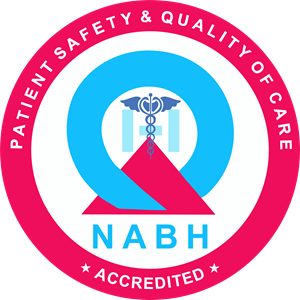As a parent, you want to see your child engage in normal activities like climbing stairs, running, or even standing. However, due to muscle weakness, they cannot perform normal daily activities.
This could be Duchenne muscular dystrophy (DMD), which progresses fast and steals their mobility by their teens, or Becker muscular dystrophy (BMD), which is slow, allowing decades of function.
The similarity between the two is that they are caused by the same faulty gene.
But they act like entirely different diseases.
The main difference between the two is that one needs immediate intervention, and the other needs a long-term strategy.
So, thinking in terms of Duchenne vs Becker muscular dystrophy will give you the clarity as a parent to strategize your child’s treatment better.
Let’s understand the similarities and differences between the two to offer your child better health and an independent future.
What Happens in Duchenne Muscular Dystrophy (DMD)?
DMD is a genetic condition in which the affected person’s muscles weaken with time because of changes in a protein called dystrophin. This protein is extremely important to keep our muscle cells strong and healthy.
Without it, the muscles break down, and they are replaced by fat and connective tissue. DMD mostly affects boys, and the symptoms start showing between the ages of 2 and 3.
DMD is passed through the X chromosome, so if the parent has the DMD gene mutation, the child will have DMD. Notably, girls have 2 X chromosomes, so even if one has the mutation, the other healthy one will make up for it. But boys have only 1 X chromosome, so when it is defective, they have DMD. In around 30% of the cases, this mutation can happen spontaneously, with no family history.
Who Primarily Gets Affected by DMD?
DMD primarily affects boys because boys have one X chromosome. In rare cases, it can affect girls. Early signs show up in toddlers with the progression of the disease. It affects the child’s walking, breathing, and even the heart. Advanced stages of Duchenne muscular dystrophy can be painful for the patient, and their heart and pulmonary function can deteriorate.
What are the Treatment Options for DMD?
Currently, there is no cure for DMD, but there are several promising treatments available. The following are the treatment options for DMD:
Physical Therapy
Stem Cell Therapy
Exon Skipping
Gene Therapy
What Happens in Becker Muscular Dystrophy?
Becker Muscular Dystrophy (BMD) is also a genetic muscle disorder that causes progressive muscle weakness because of insufficient or abnormal dystrophin protein. BMD progresses slowly in comparison to DMD. It mostly appears in teenagers or young adults.
Who Gets BMD?
A child may get it if there is a defect in the X chromosome in the dystrophic gene. This defect results in abnormal dystrophin production.
BMD follows an X-linked recessive inheritance pattern. This primarily affects males because they have only one X chromosome, which they inherit from their carrier mother. Sons of such a mother have a 50% chance of inheriting the disorder.
The patient’s muscle weakness starts in the hips and pelvis and spreads to the shoulders and thighs. Other than that, there are some other symptoms, like walking on tiptoes or swaying postures, frequent falls, difficulty climbing stairs, rising from the floor, and heart issues.
If you see any of these symptoms, you should reach out to a doctor. It is diagnosed using blood tests, muscle biopsy, genetic testing, and an ECG (Electrocardiogram).
What are the Treatment Options for BMD?
For BMD, like all other MDs, it doesn’t have a cure. Physical therapy and occupational therapy are essential for it. Braces and orthopaedic care can give much-needed relief from spine and joint issues.
Doctors will also prescribe heart medication if the child has any related issues. Advanced treatments like gene therapy and stem cell therapy can help manage the symptoms effectively.
Key Differences Between Duchenne and Becker Muscular Dystrophy
| Feature | Duchenne Muscular Dystrophy (DMD) | Becker Muscular Dystrophy (BMD) |
| Age of onset | 2-5 years (early childhood) | 5-15 years (later childhood/adulthood) |
| Progression | Rapid, severe muscle wasting | Slower, milder progression |
| Muscle weakness | Starts in the hips/pelvis and then full body by teenage years | Begins in the hips/thighs, and it slowly spreads to other parts |
| Walking ability | Wheelchair-bound by 12 years in most cases | Often walk into the 30s and 40s |
| Life expectancy | In 20-30s, they need respiratory and cardiac care | Near-normal or mid-adulthood |
| Genetic mutation | No functional dystrophin | Reduced or abnormal dystrophin |
| Daily function | Severe limitations and a need for feeding and breathing aids | Moderate limitations and may need assistive devices |
| Cardiac involvement | Common by teenage years | Develop later in their 20s or 40s |
| Creatine Kinase levels | Extremely high | Severe limitations and need for feeding and breathing aids |
Duchenne vs Becker Muscular Dystrophy: Care & Support Made Simple
The care and support needed for BMD and DMD have differences, too. BMD patients need to see heart and muscle doctors yearly. They need to start physical therapy early to keep walking for longer.
DMD patients need to visit the doctor more frequently (every 3-6 months). The team that is treating them is bigger and includes lung, bone, and nutrition doctors.
BMD patients may need leg braces in their 20s and 30s. Many can walk throughout their adulthood with the help of therapies. Most DMD patients become wheelchair-bound by age 10-12. Stretching exercises and proper treatment help delay stiff joints. Treatments like stem cell therapy can give significant relief in this regard.
Both BMD and DMD patients need regular heart checkups. In BMD, patients may need nighttime breathing masks in their 30s and 40s. DMD patients may need breathing support from early childhood.
Both need emotional support. In the case of BMD, the child and their family’s main concerns are jobs, driving, family life, and self-reliance. In adulthood, they may get depressed and need help from experts.
DMD patients and their families may be anxious and stressed about declining health and dependence on the caregiver. Their siblings, parents, or primary caregiver will need support group help.
Takeaway
We understand that as a parent, it is hard for you to watch your child struggle with the simplest of tasks. But understanding whether it is BMD or DMD is the first step towards making them future-ready and self-reliant.
While both stem from the same genetic defect, DMD requires urgent and progressive care, and BMD calls for long-term planning to maintain independence in adulthood.
MedicoExperts can be the bridge between you and top specialists, advanced treatments, and personalized care. We will help you throughout your child’s journey to an independent future.
Frequently Asked Questions (FAQs):
Q1. What’s the single most important thing we should be doing right now for DMD/BMD patients?
A. For DMD, consult a doctor. The doctor may recommend steroids and physical therapy immediately after diagnosis.
For BMD, the doctor may recommend cardiac checkups and treatment and medications accordingly. They will need annual checkups.
Q2. How do we explain our child’s condition to their school?
A. You can ask for an IEP (Individualized Education Plan) that includes extra time between classes, elevator access before wheelchair needs, modified PE requirements, and an emergency evacuation plan.
Q3. When should we transition to adult care?
A. Start planning at age 12 to find an adult neurologist specializing in muscular dystrophy. Line up all the legal guardianship processes. Also, look for vocational rehabilitation services.
Q4. What happens when we can no longer lift/care for them?
A. Start planning from the diagnosis stage. Do home modifications like ceiling lifts and roll-in showers. Keep open shelves for frequently used items, and make access and navigation through the house super easy. Ensure the bedroom and bathroom are on the main floor. Connect with support groups.
References
Relevant Articles For You
How Does Duchenne Muscular Dystrophy Affect Daily Life?
DMD is a genetic disease that leads to progressive muscle weakness and degeneration. It can be diagnosed in early childhood and some common signs of this disease are…..Read More
Recommendations To Understand Different Treatments
Muscular Dystrophy Treatment
When you opt for advanced treatments for muscular dystrophy, they focus more on regenerating muscle tissues and minimizing the symptoms instead of managing them and…..Read More
Medically Reviewed by MedicoExperts Editorial & Clinical Review Board on 28 May 2025



